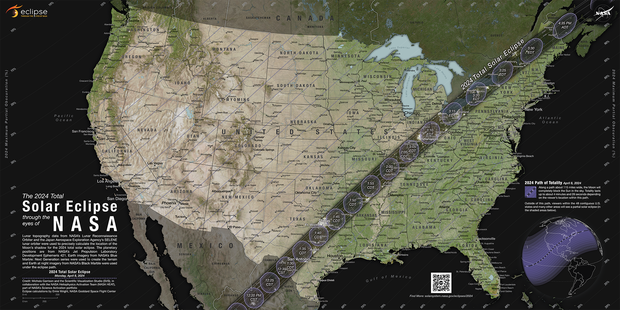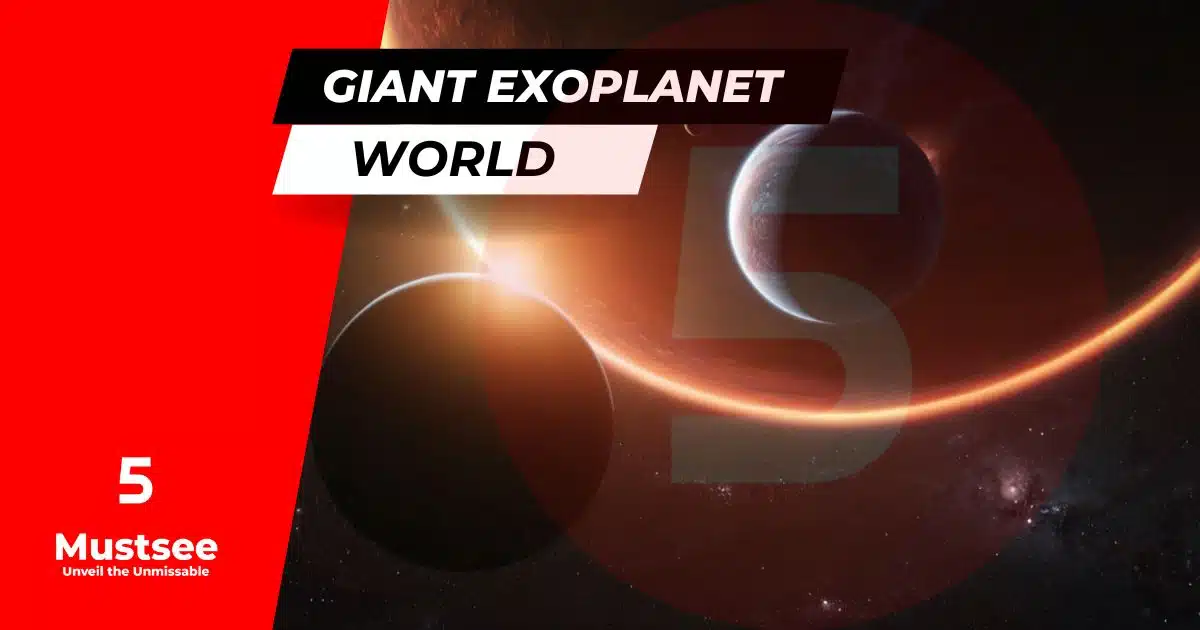The mesmerizing total eclipse will make its debut along Mexico’s Pacific Coast at approximately 11:07 a.m. PDT, before voyaging across the U.S. from Texas to Maine and eventually extending into Canada.
A population of about 31.6 million resides in the path of totality, where the moon will entirely obscure the sun, as per NASA. This path will vary between 108 and 122 miles in width, with an additional 150 million individuals residing within 200 miles of the path of totality.
2024 Solar Eclipse Path of Totality Map

The astonishing total solar eclipse will commence over the Pacific Ocean, with the initial location on continental North America experiencing totality being Mexico’s Pacific Coast at 11:07 a.m. PDT on April 8, according to NASA. Subsequently, the path will extend into Texas, traversing numerous states before entering Canada in southern Ontario. The eclipse will bid farewell to continental North America around 5:16 p.m. NDT from Newfoundland, Canada.
The path of totality encompasses sections of the following states:
– Texas
– Arkansas
– Indiana
– Ohio
– New York
– Vermont
– Tennessee
– Michigan
Several prominent cities fall within the eclipse’s path of totality, while others will witness a partial eclipse. Listed below are some recommended major cities for eclipse viewing — weather permitting:
– San Antonio, Texas
– Austin, Texas
– Waco, Texas
– Dallas, Texas
– Little Rock, Arkansas
– Indianapolis, Indiana
– Dayton, Ohio
– Cleveland, Ohio
– Buffalo, New York
– Rochester, New York
– Syracuse, New York
– Burlington, Vermont
Timeline of the Solar Eclipse Totality Across the Path
The eclipse will kick off in the U.S. as a partial eclipse at 12:06 p.m. CDT near Eagle Pass, Texas, progressing into totality around 1:27 p.m. CDT, and continuing its northeast trajectory over the subsequent hours.
NASA has provided specific timings for numerous cities within the path of totality across the U.S. You can also input your ZIP code on NASA’s map to ascertain when the eclipse will reach your location if you are within or near the path of totality, or if you will observe a partial eclipse instead.
Partial Eclipse Visibility Outside the Path of Totality
Outside the path of totality, observers might catch a glimpse of a partial eclipse, wherein the moon obscures part of the sun but not its entirety, according to NASA. The closer one is to the path of totality, the larger the portion of the sun that will be obscured.
NASA enables viewers to enter a ZIP code to determine the extent of the sun’s coverage in their locality.
Potential Cloud Cover During the Solar Eclipse
Certain areas along the path of totality may experience higher chances of cloud cover, which could impede eclipse visibility. A map displaying historical cloud cover trends during this period of the year is available. You can refer to the latest forecast for your area with assistance from our partners at The Weather Channel.

Location with Longest Totality Duration
Enthusiasts near Torreón, Mexico, will savor the longest totality duration. NASA states that totality there will last 4 minutes and 28 seconds.
Most locales along the centerline of the path of totality will witness a totality duration between 3.5 and 4 minutes. Some spots in the U.S. come close to the maximum duration, with Kerrville, Texas, expecting totality for 4 minutes and 24 seconds.
Path of Totality for the 2044 Solar Eclipse
Following the April 8 eclipse, the next total solar eclipse visible from the contiguous U.S. will occur on August 23, 2044.
Astronomy aficionados in the U.S. will have fewer opportunities to witness the 2044 eclipse compared to the imminent one on April 8. Currently, NASA has not released maps for the 2044 eclipse; however, according to The Planetary Society, its path of totality will only intersect three states.
The 2024 eclipse will commence in Greenland, traverse over Canada, and culminate as the sun sets in Montana, North Dakota, and South Dakota, as per the Planetary Society.

FAQ Section
1. How long will totality last during the 2024 solar eclipse?
Enthusiasts near Torreón, Mexico, will witness the longest totality duration of 4 minutes and 28 seconds. Most places along the path of totality will experience a duration between 3.5 and 4 minutes.
2. What is the next total solar eclipse after 2024?
The next total solar eclipse visible from the contiguous U.S. will occur on August 23, 2044. This eclipse will have a limited path of totality touching only three states.
3. How can I check cloud cover forecasts during the eclipse?
You can refer to historical cloud cover trends and check the latest forecasts for your location with assistance from The Weather Channel to determine the potential cloud cover during the solar eclipse.





